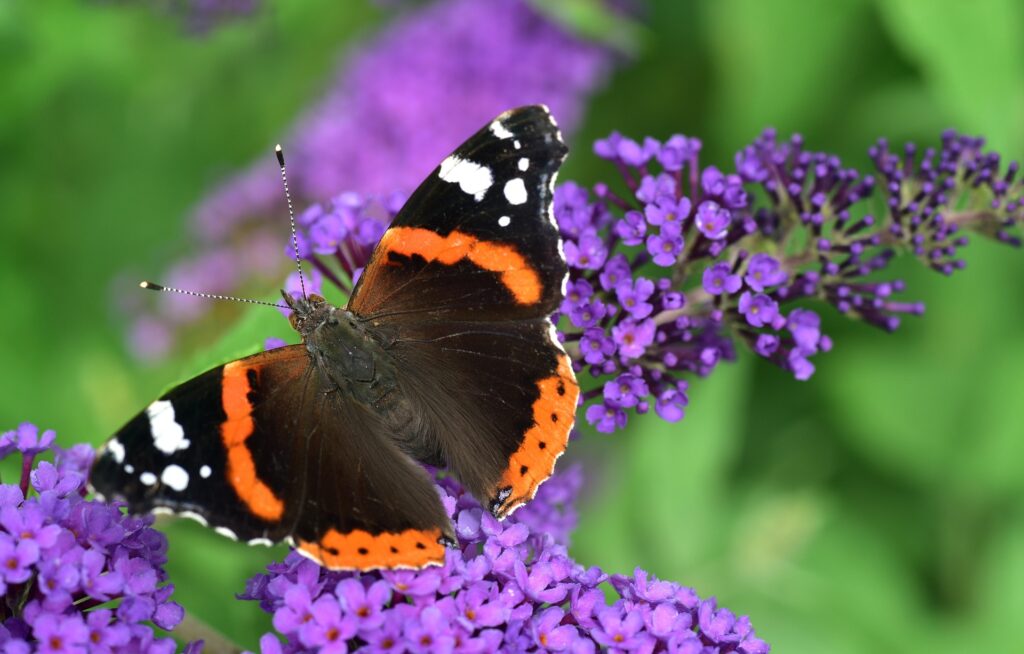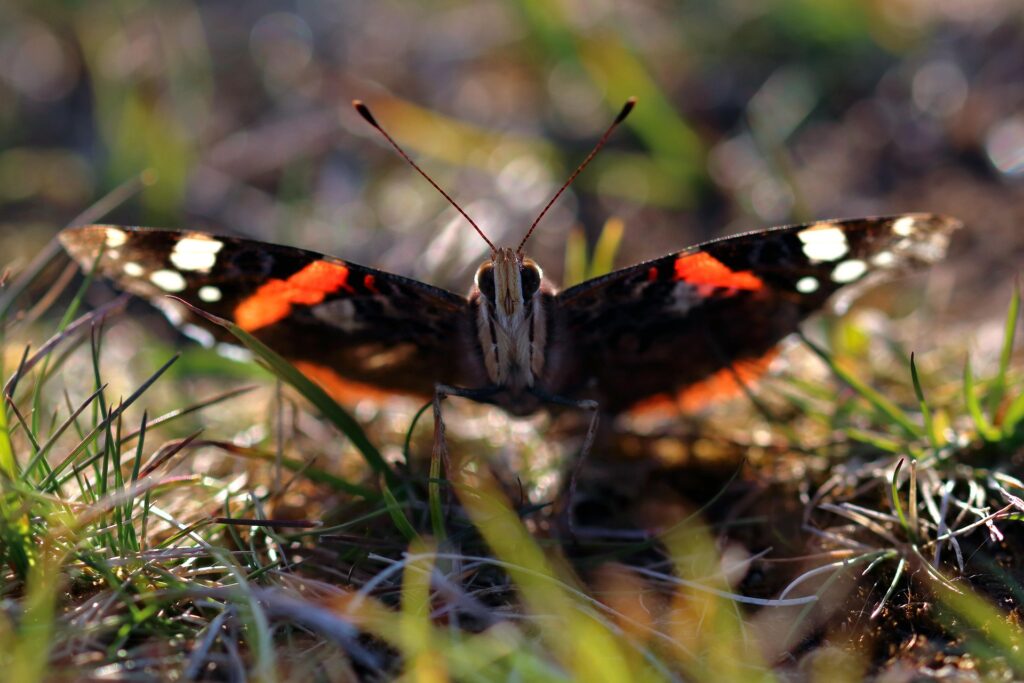The Red Admiral is one of the most familiar and widespread UK butterfly species. Towards the end of June, I’ve seen many fluttering around. Once, when walking by a hedgerow one settled on my jacket before fluttering off, flying round and landing back on me, six or seven times. It was surprising and lovely. And because I had been working on a linoprint of a Red Admiral at the time, I decided I had little choice but to dedicate a post to this beautiful and intriguing insect.
I’m glad I’ve read a little more about them. There are some fascinating things about Red Admirals.

Winged Migration
Although Red Admirals can be seen for much of the year and although some are thought to hibernate as adults in the South and South West of England, most Red Admirals migrate to the UK each spring from continental Europe or even North Africa. Yes, these small, seemingly fragile creatures cross continents, they cross the Channel, travelling hundreds if not thousands of miles. Then, the next generation of adults return south in autumn.
generations
We all know the story. Butterflies lay eggs. The eggs hatch into (hungry) caterpillars which eventually become a chrysalis. From this, a beautiful butterfly emerges. But for Red Admirals this story takes place across continents.
The Red Admiral adults that arrive in spring lay their eggs on nettles, which eventually become adults from around late June onwards. The friendly one that landed on me was probably one of that first, freshly hatched brood of locally bred butterflies. Butterflies of the summer generation may live for only two to four weeks and apparently breed again to produce a second, local generation which emerge in late August and September. These adult butterflies may linger into autumn or even early winter, when they are often seen feeding on rotting fruit. Unlike the fleeting summer generation, this brood can apparently live for months and mostly migrate to warmer areas in Southern Europe or North Africa, where they may mate again to produce eggs which develop slowly over winter, eventually emerging as the adults that will then migrate north the following spring. Remarkable.

Red hot
Apparently, the colour and size of the wingstripe on the Red Admiral varies depending on how warm it is when they form in the chrysalis. In warmer conditions, this pupal phase is shorter and the butterflies emerge with large bright scarlet stripes. In cooler conditions, the butterflies take much longer to emerge, and when they do, they have a smaller, less vibrant stripe.
Images: Pete, Leopictures, Oleksandr K from Pixabay
